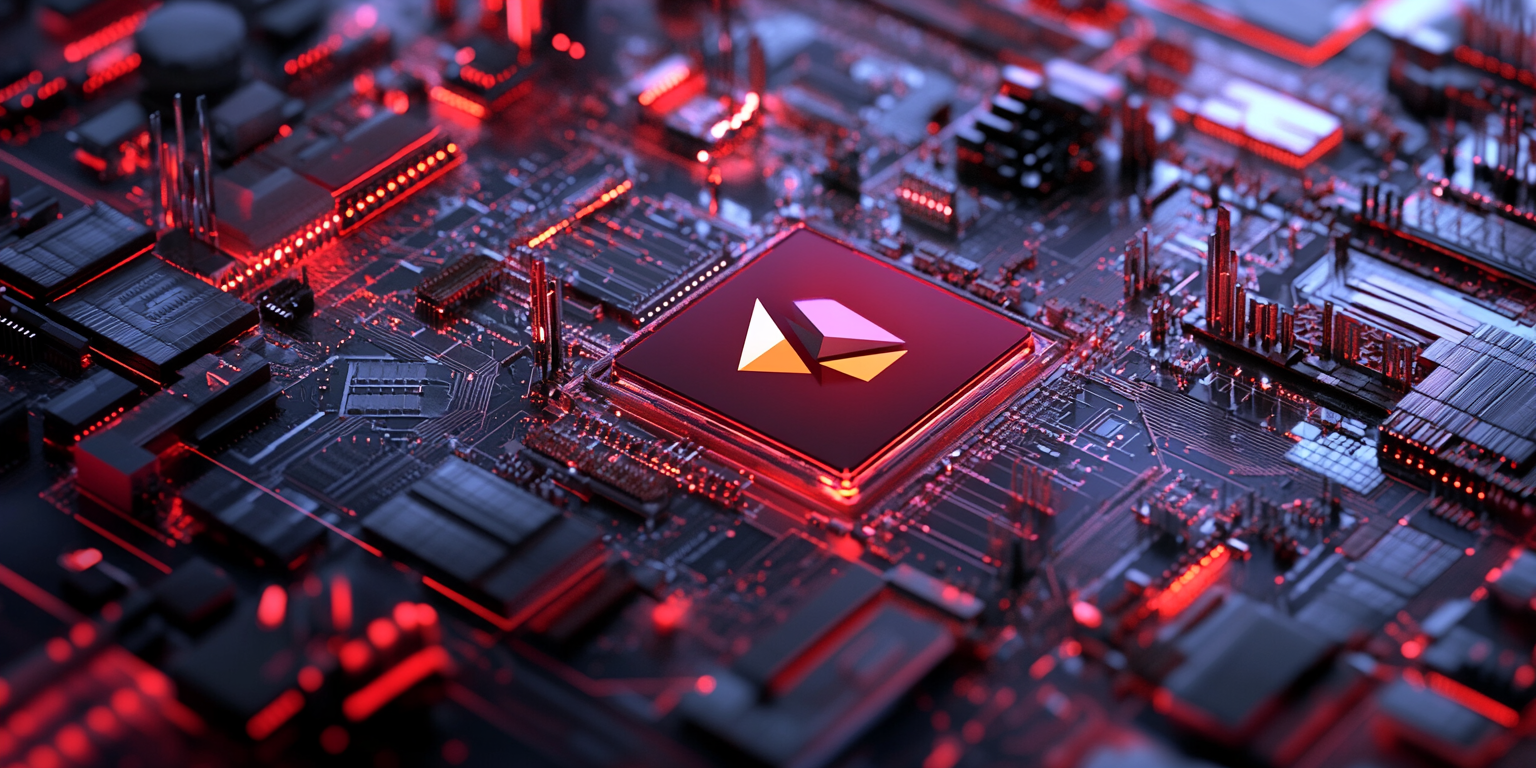1. Introduction to Ethereum
What Is Ethereum?
Ethereum is a decentralized, open-source blockchain platform that enables the creation and execution of smart contracts and decentralized applications (DApps). Unlike traditional systems that rely on a central authority, Ethereum operates on a global network of nodes, making it resilient to censorship and downtime. At its core, Ethereum allows developers to build and deploy code that can run autonomously, ensuring trust and transparency without intermediaries.
Ether (ETH) is the native cryptocurrency of the Ethereum network, used to pay for transactions and computational services. As the second-largest cryptocurrency by market capitalization, Ethereum has become a cornerstone of the blockchain ecosystem.
Ethereum vs Bitcoin: Key Differences
While Ethereum and Bitcoin share the foundational technology of blockchain, their purposes and functionalities differ significantly:
- Purpose: Bitcoin was created as a decentralized digital currency for peer-to-peer transactions. Ethereum, on the other hand, serves as a platform for decentralized applications and smart contracts.
- Flexibility: Ethereum’s programmable nature enables developers to create complex logic through smart contracts, whereas Bitcoin's scripting language is intentionally limited.
- Consensus Mechanisms: Ethereum has transitioned from Proof of Work (PoW) to Proof of Stake (PoS) with Ethereum 2.0, reducing energy consumption and increasing scalability. Bitcoin continues to operate on PoW.
- Block Time: Ethereum’s average block time is faster, at around 12 seconds, compared to Bitcoin’s 10 minutes.
These differences highlight Ethereum’s adaptability and focus on innovation, making it a versatile tool for developers and enterprises.
Why Ethereum Matters in the Blockchain Ecosystem
Ethereum has revolutionized the blockchain space by introducing smart contracts and fostering the growth of decentralized applications. Its impact is evident in several areas:
- Decentralized Finance (DeFi): Ethereum powers a vast majority of DeFi projects, enabling users to lend, borrow, and trade assets without traditional banks.
- Non-Fungible Tokens (NFTs): As the backbone of the NFT market, Ethereum has facilitated the creation and exchange of digital art, collectibles, and more.
- Decentralized Autonomous Organizations (DAOs): Ethereum enables the formation of DAOs, which operate on collective decision-making without centralized leadership.
- Innovation: Ethereum’s robust ecosystem of tools, frameworks, and developer support has spurred innovation across industries, from supply chain management to gaming.
In summary, Ethereum’s unique capabilities and widespread adoption have positioned it as a key driver of blockchain technology’s future. Whether you are a developer, investor, or enthusiast, understanding Ethereum is essential for navigating the evolving landscape of decentralized systems.

2. Blockchain Basics
How Blockchain Works
At its core, blockchain is a distributed ledger technology that records transactions in a secure, immutable, and transparent manner. It operates as a decentralized network where data is stored in blocks, linked together chronologically to form a chain. Each block contains:
- Transaction Data: Details about the operations performed.
- Timestamp: The time at which the block was created.
- Hash: A unique identifier generated from the block's contents.
- Previous Block Hash: Linking the block to the one before it, ensuring the integrity of the chain.
When a new transaction is initiated, it is broadcast to the network, verified by nodes through a consensus mechanism, and added to the blockchain. This decentralized model eliminates the need for intermediaries and makes tampering with data nearly impossible.
Decentralization: The Core Principle
Decentralization is the defining feature of blockchain technology. Unlike traditional databases managed by a single entity, blockchain distributes data across a network of nodes. Each node maintains a copy of the ledger, ensuring:
- Transparency: All participants can view the transaction history.
- Security: The absence of a central point of failure makes the network resilient to attacks.
- Trust: Consensus mechanisms ensure that only valid transactions are added to the blockchain.
This decentralized approach empowers users and fosters trust in a system without relying on a centralized authority.
Smart Contracts: Definition and Use Cases
Smart contracts are self-executing programs stored on the blockchain, designed to automatically enforce agreements when predefined conditions are met. These contracts are written in code and run on the Ethereum Virtual Machine (EVM), ensuring accuracy and immutability.
Key Features of Smart Contracts:
- Automation: Once deployed, smart contracts operate without human intervention.
- Trustless Execution: Parties do not need to trust each other; the contract’s code ensures compliance.
- Transparency: All terms and executions are visible on the blockchain.
Use Cases:
- Finance: Automating loan agreements, insurance claims, and payment processes.
- Supply Chain: Enhancing transparency by tracking goods from origin to delivery.
- Real Estate: Facilitating property transactions and lease agreements.
- Voting: Enabling secure and transparent elections.
- Digital Identity: Providing users control over their personal data.
Smart contracts have unlocked a world of possibilities, paving the way for innovation across industries. They exemplify the power of blockchain technology in creating trustless, efficient systems.

3. Ethereum Technology
The Ethereum Virtual Machine (EVM)
The Ethereum Virtual Machine (EVM) is the decentralized runtime environment that executes smart contracts. It functions as a global, distributed computer where all nodes in the Ethereum network participate in the execution of code. The EVM ensures uniform behavior across the network, regardless of the underlying hardware or software.
Key Features of the EVM:
- Turing Completeness: The EVM can execute any computational task that can be described algorithmically, enabling a wide range of applications.
- Sandboxed Environment: Code execution in the EVM is isolated, ensuring that smart contracts cannot interact directly with the host system, enhancing security.
- State Management: The EVM maintains the global state of the Ethereum blockchain, which includes account balances, contract code, and data storage.
The EVM’s capabilities make it the backbone of Ethereum, providing a secure and reliable environment for smart contracts and decentralized applications (DApps).
Gas Fees: What They Are and How They Work
Gas fees are a fundamental aspect of Ethereum, representing the cost of performing operations on the network. They ensure that computational resources are allocated efficiently and prevent abuse of the system.
How Gas Fees Work:
- Gas Units: Every operation in the EVM consumes a specific number of gas units. For instance, simple transactions require less gas, while complex smart contracts require more.
- Gas Price: Users specify the amount of Ether they are willing to pay per gas unit. Higher gas prices incentivize miners to prioritize a transaction.
- Total Cost: The total transaction fee is calculated as:Gas Used × Gas Price
Importance of Gas Fees:
- Preventing spam by imposing a cost on transactions.
- Allocating network resources to the highest-priority tasks.
- Compensating validators (or miners) for their computational effort.
Gas fees play a critical role in maintaining the efficiency and security of the Ethereum network.
Ethereum Nodes and Clients
Nodes are the backbone of the Ethereum network, maintaining the blockchain and validating transactions. They come in various types, depending on their role and functionality:
Types of Nodes:
- Full Nodes: Store the entire blockchain history and validate all transactions and blocks.
- Light Nodes: Store only a subset of the blockchain and rely on full nodes for validation.
- Archive Nodes: Maintain a complete historical record of the blockchain, including all past states.
Ethereum Clients:
Ethereum clients are software implementations that allow nodes to interact with the network. Popular clients include:
- Geth: Written in Go and widely used for Ethereum development.
- OpenEthereum: A fast, reliable client aimed at developers and enterprises.
- Besu: An enterprise-focused client with advanced features and interoperability.
Nodes and clients ensure the decentralization and robustness of the Ethereum network, supporting its global operation.
Consensus Mechanisms: From Proof of Work (PoW) to Proof of Stake (PoS)
Consensus mechanisms are protocols that enable network participants to agree on the validity of transactions and the state of the blockchain. These mechanisms are essential for maintaining the decentralized nature of Ethereum and ensuring the integrity of the network.
Proof of Work (PoW)
PoW was Ethereum’s original consensus mechanism, where miners competed to solve complex mathematical puzzles. The first to solve the puzzle would add a new block to the blockchain and receive a reward. While PoW effectively secured the network, it came with significant drawbacks:
- Energy Consumption: Mining required immense computational power, leading to high energy usage and environmental concerns.
- Centralization Risks: The need for specialized hardware (e.g., ASICs) concentrated mining power in the hands of a few large players.
- Scalability Limits: PoW’s design led to slower transaction processing and higher costs as the network grew.
Proof of Stake (PoS)
With Ethereum 2.0, the network transitioned to PoS, a more efficient and sustainable consensus mechanism. Unlike PoW, PoS relies on validators who lock up Ether (ETH) as collateral to participate in block validation.
Key Advantages of PoS
- Energy Efficiency: By eliminating the need for mining, PoS drastically reduces energy consumption, making it a greener alternative.
- Enhanced Security: PoS discourages malicious activity by requiring validators to stake ETH, which they risk losing if they act dishonestly.
- Decentralization: PoS lowers the barrier to entry for participation, encouraging a broader range of validators and reducing centralization risks.
How PoS Works
- Validator Selection: Validators are chosen to propose and validate new blocks based on the amount of ETH they have staked and a random selection process.
- Attestation: Validators confirm transactions and add them to the blockchain. Honest behavior is rewarded with additional ETH, while dishonest actions can result in penalties or slashing of staked funds.
- Finalization: The PoS protocol ensures that blocks are finalized through a series of votes, making it nearly impossible to alter confirmed transactions.
Future Potential
The move to PoS lays the foundation for further scalability solutions, such as sharding, which will divide the blockchain into smaller segments to handle more transactions simultaneously. This transition represents Ethereum’s commitment to sustainability, security, and scalability, solidifying its position as a leader in blockchain innovation.

4. Getting Started with Ethereum
Setting Up an Ethereum Wallet
An Ethereum wallet is a digital tool that allows you to store, send, and receive Ether (ETH) and interact with decentralized applications (DApps). Wallets come in different forms, each catering to specific needs and levels of security.
Types of Wallets:
- Software Wallets: Applications that can be installed on your computer or smartphone. Examples include MetaMask and MyEtherWallet.
- Hardware Wallets: Physical devices like Ledger and Trezor, offering offline storage for enhanced security.
- Paper Wallets: A printed representation of your private and public keys. While secure against online threats, they are susceptible to physical damage or loss.
Steps to Set Up a Wallet:
- Choose a Wallet Type: Select a wallet based on your needs and level of technical expertise.
- Download or Purchase: Obtain the wallet software or hardware from a trusted source.
- Create an Account: Follow the setup instructions to generate your wallet address and private key.
- Backup Your Keys: Store your private key and recovery phrase securely, as they are essential for accessing your funds.
A wallet is your gateway to the Ethereum network, so choose wisely and prioritize security.
Buying and Storing Ether (ETH)
Ether (ETH) is the native cryptocurrency of Ethereum, used for transactions and smart contract execution. Acquiring ETH is simple and involves a few key steps.
How to Buy ETH:
- Choose a Crypto Exchange: Platforms like Coinbase, Binance, and Kraken allow users to buy ETH with fiat currency or other cryptocurrencies.
- Create an Account: Register on the exchange and complete any required identity verification.
- Deposit Funds: Add fiat currency or other cryptocurrencies to your exchange account.
- Purchase ETH: Place an order to buy ETH, specifying the amount and price (market or limit order).
Storing Your ETH:
After purchasing, transfer your ETH from the exchange to your wallet. This reduces the risk of losing funds in case of a security breach at the exchange.
Choosing the Right Wallet: Software, Hardware, or Paper?
Each wallet type offers unique advantages and trade-offs. Understanding these differences will help you make an informed decision.
Software Wallets:
- Pros: Easy to use, compatible with DApps, and accessible anywhere.
- Cons: Vulnerable to hacking and malware if not properly secured.
Hardware Wallets:
- Pros: High security, offline storage, and resistance to cyber threats.
- Cons: Costs money and requires physical access for transactions.
Paper Wallets:
- Pros: Immune to online attacks, inexpensive to create.
- Cons: Prone to physical damage or loss and challenging to use for frequent transactions.
The right choice depends on your priorities, such as convenience, security, and usage frequency.
Interacting with Decentralized Applications (DApps)
DApps are applications that run on the Ethereum blockchain, offering decentralized solutions for various use cases, such as finance, gaming, and identity management. To interact with DApps, you’ll need a wallet and some ETH for gas fees.
How to Use DApps:
- Connect Your Wallet: Most DApps support wallet integrations like MetaMask. Connect your wallet to the application to start.
- Authorize Transactions: When interacting with a DApp, you may need to approve transactions or permissions. Always double-check the details before confirming.
- Pay Gas Fees: Ensure your wallet has enough ETH to cover transaction costs.
Popular DApps:
- Uniswap: A decentralized exchange for swapping cryptocurrencies.
- OpenSea: A marketplace for buying and selling NFTs.
- Aave: A lending platform for borrowing and earning interest on crypto assets.
By using DApps, you can leverage the power of Ethereum to access innovative, decentralized solutions.
Tips for Beginners
- Start Small: Begin with small amounts of ETH to familiarize yourself with the ecosystem.
- Stay Informed: Follow Ethereum news and updates to keep track of developments and opportunities.
- Prioritize Security: Use hardware wallets for significant amounts of ETH and enable two-factor authentication on exchanges.
- Learn by Doing: Explore testnets (like Ropsten or Goerli) to practice using Ethereum without risking real funds.
Getting started with Ethereum is an exciting journey. By setting up a secure wallet, acquiring ETH, and exploring DApps, you’ll unlock the potential of this revolutionary blockchain platform.

5. Developing on Ethereum
Overview of Solidity: Ethereum’s Programming Language
Solidity is a high-level, statically-typed programming language designed specifically for developing smart contracts on Ethereum. It resembles languages like JavaScript and Python, making it accessible to developers with prior coding experience.
Key Features of Solidity:
- Smart Contract Focus: Built to define and implement contracts that run on the Ethereum Virtual Machine (EVM).
- Strong Typing: Ensures data integrity and helps catch errors during development.
- Inheritance: Supports contract inheritance, enabling code reuse and modular design.
- Custom Modifiers: Allows developers to define reusable, condition-based logic.
Solidity is the primary language for creating decentralized applications (DApps) on Ethereum, making it an essential tool for developers.
Writing Your First Smart Contract
Creating a basic smart contract is a straightforward process. Below is a simple example of a smart contract written in Solidity:
pragma solidity ^0.8.0;
contract HelloWorld {
string public message;
// Constructor to initialize the contract
constructor(string memory initialMessage) {
message = initialMessage;
}
// Function to update the message
function updateMessage(string memory newMessage) public {
message = newMessage;
}
}
Steps to Create a Smart Contract:
- Set Up a Development Environment: Use tools like Remix, an online Solidity IDE, or install frameworks like Hardhat or Truffle.
- Write the Code: Define the contract, its state variables, and functions.
- Compile the Contract: Use the Solidity compiler (solc) to verify the code for errors.
- Deploy to a Network: Deploy your contract to an Ethereum testnet or mainnet.
This simple contract demonstrates how to store and update a message on the blockchain.
Introduction to Ethereum Development Frameworks
Ethereum development frameworks streamline the process of building, testing, and deploying smart contracts. Here are some popular options:
Truffle:
- Features: A comprehensive suite for development, testing, and deployment.
- Advantages: Built-in testing framework, migrations for contract deployment, and integration with Ganache for local blockchain simulation.
Hardhat:
- Features: Focuses on flexibility and extensibility with a robust plugin ecosystem.
- Advantages: Advanced debugging tools, automated testing, and seamless Solidity compatibility.
Remix:
Remix is a web-based Integrated Development Environment (IDE) specifically designed for Ethereum and Solidity development. It offers a user-friendly interface that enables developers to write, debug, and deploy smart contracts directly from their browsers without the need for extensive local setup. Remix is ideal for beginners exploring Solidity or for developers who want to quickly prototype and test contracts. With built-in features like a Solidity compiler, transaction debugger, and deployment tools, Remix provides a comprehensive platform for smart contract development and experimentation.
Using Remix to Create, Test, and Deploy Smart Contracts
Remix simplifies the entire development lifecycle of a smart contract. Here’s how to use it:
- Writing the Smart Contract:
- Open Remix IDE in your browser.
- Create a new file with a .sol extension (e.g. MyContract.sol).
- Write your Solidity code in the editor. Remix provides syntax highlighting and error detection to guide your coding process.
- Compiling the Contract:
- Navigate to the Solidity Compiler tab in Remix.
- Select the appropriate compiler version matching your Solidity code.
- Click on "Compile" to generate the bytecode and Application Binary Interface (ABI).
- Testing the Contract:
- Go to the Deploy & Run Transactions tab.
- Select the "JavaScript VM" environment to simulate blockchain interactions locally.
- Deploy the contract by clicking "Deploy." You can now interact with the contract’s functions directly from Remix’s interface.
- Deploying to a Network:
- Switch to the desired network, such as a testnet (e.g., Ropsten or Goerli) or the mainnet, using MetaMask or another wallet.
- Ensure your wallet is funded with ETH to cover gas fees.
- Click "Deploy" and confirm the transaction in your wallet.
- Verifying Deployment:
- After deployment, note the contract address provided by Remix.
- Use a block explorer like Etherscan to verify the contract and view its details.
By following these steps, developers can efficiently create, test, and deploy smart contracts with minimal setup, making Remix a valuable tool for Ethereum development.
Deploying Smart Contracts on the Ethereum Network
Deploying a smart contract involves publishing its code to the Ethereum blockchain. Follow these steps:
- Choose a Network: Decide whether to deploy to a testnet (e.g., Ropsten, Goerli) or the Ethereum mainnet.
- Fund Your Wallet: Ensure your wallet has enough ETH to cover deployment gas fees.
- Use a Deployment Tool: Utilize frameworks like Truffle or Hardhat, or deploy directly through Remix.
- Verify the Deployment: Check the transaction on an Ethereum block explorer (e.g., Etherscan) to confirm successful deployment.
Once deployed, the contract’s address can be used to interact with it programmatically or through DApp interfaces.
Ethereum development offers endless possibilities for creating innovative solutions. By mastering Solidity and leveraging powerful tools, developers can unlock the full potential of blockchain technology.

6. Ethereum Use Cases
Decentralized Finance (DeFi)
Decentralized Finance (DeFi) is one of the most transformative use cases of Ethereum. DeFi refers to a suite of financial services built on blockchain technology that eliminates the need for traditional intermediaries like banks and financial institutions.
Key Features of DeFi:
- Permissionless: Anyone with an internet connection can access DeFi applications without the need for approval from central authorities.
- Transparency: All transactions and smart contract code are publicly available on the blockchain, promoting trust.
- Interoperability: DeFi protocols can seamlessly interact with one another, creating a composable financial ecosystem.
Popular DeFi Applications:
- Uniswap: A decentralized exchange (DEX) that facilitates token swaps without an order book.
- Aave: A lending and borrowing platform enabling users to earn interest on deposits or take out loans.
- Compound: A protocol for algorithmic, interest-rate markets, allowing users to lend and borrow assets.
DeFi has democratized access to financial services, enabling individuals to manage their assets more autonomously.
Non-Fungible Tokens (NFTs)
Non-Fungible Tokens (NFTs) are unique digital assets that represent ownership of a specific item or piece of content. NFTs are created using Ethereum’s ERC-721 and ERC-1155 standards, ensuring uniqueness and interoperability across platforms.
Key Applications of NFTs:
- Digital Art: Artists can mint, sell, and trade their works directly to collectors (e.g., on platforms like OpenSea and Foundation).
- Gaming: NFTs are used for in-game items and collectibles, giving players true ownership of digital assets.
- Virtual Real Estate: Platforms like Decentraland allow users to buy, sell, and develop virtual land as NFTs.
NFTs have revolutionized the digital economy by introducing provable ownership and scarcity to digital assets.
Decentralized Applications (DApps)
DApps are applications that run on the Ethereum blockchain, leveraging its decentralized infrastructure. Unlike traditional apps, DApps are powered by smart contracts and operate without centralized control.
Examples of DApps:
- Social Networks: Platforms like Minds and Status promote censorship-resistant communication.
- Marketplaces: Decentralized marketplaces like Rarible allow users to trade NFTs and other assets.
- Identity Management: Projects like uPort enable users to manage their digital identities securely.
DApps empower users by providing decentralized alternatives to centralized platforms, enhancing transparency and reducing censorship.
Decentralized Autonomous Organizations (DAOs)
DAOs are organizations governed by smart contracts and decentralized decision-making processes. They operate without traditional hierarchical structures, relying on blockchain technology for transparency and automation.
Features of DAOs:
- Token-Based Voting: Members use governance tokens to vote on proposals and decisions.
- Treasury Management: DAOs often manage funds through smart contracts, ensuring accountability.
- Community-Driven: Decisions are made collectively by the DAO members.
Examples of DAOs:
- MakerDAO: Manages the DAI stablecoin and governs its monetary policy.
- Gitcoin: A platform for funding open-source projects via community governance.
- The DAO: One of the first DAOs, which laid the groundwork for modern decentralized organizations.
DAOs offer a new way to organize communities and manage resources transparently and efficiently.
Enterprise Solutions
Ethereum’s flexibility and programmability make it suitable for enterprise use cases. Companies and organizations are leveraging Ethereum to improve efficiency, security, and transparency in various industries.
Examples of Enterprise Use Cases:
- Supply Chain Management: Tracking goods from origin to delivery with real-time data on the blockchain.
- Healthcare: Securely managing patient data and streamlining data sharing across providers.
- Finance: Streamlining cross-border payments and enabling tokenized securities.
Enterprise Ethereum Alliance (EEA) fosters collaboration among businesses to create industry standards and drive adoption of Ethereum in enterprise solutions.
Web3 and the Future of Decentralization
Ethereum is a cornerstone of Web3, the decentralized internet that aims to return control of data and applications to users. Key elements include:
- Decentralized Storage: Solutions like IPFS and Filecoin offer distributed storage for data and content.
- Self-Sovereign Identity: Users own and control their digital identities.
- Tokenized Economies: Blockchain technology enables new economic models, such as token-based rewards and governance.
Web3 represents a paradigm shift in how applications are built and how users interact with digital ecosystems.

7. Ethereum Ecosystem
Popular Ethereum-Based Projects
The Ethereum ecosystem is home to a wide variety of innovative projects, spanning finance, gaming, identity, and more. These projects showcase the versatility and potential of Ethereum as a platform.
Key Projects:
- Uniswap: A decentralized exchange enabling trustless token swaps.
- Aave: A protocol for lending and borrowing cryptocurrencies.
- OpenSea: A marketplace for NFTs, allowing users to buy, sell, and trade digital assets.
- The Graph: A decentralized indexing protocol for querying blockchain data.
- ENS (Ethereum Name Service): Simplifies Ethereum addresses by replacing them with human-readable names.
These projects demonstrate how Ethereum empowers developers and users to create and engage with decentralized applications.
Decentralized Autonomous Organizations (DAOs)
DAOs play a critical role in the Ethereum ecosystem, enabling community-driven governance and resource management.
Features of DAOs:
- Transparent Decision-Making: All actions and votes are recorded on the blockchain.
- Autonomous Operations: Smart contracts automate key processes.
- Inclusive Participation: Token holders have a say in governance and direction.
Examples of successful DAOs include MakerDAO, which governs the DAI stablecoin, and Gitcoin, which funds open-source development. DAOs represent a new organizational paradigm, leveraging Ethereum’s decentralization to promote collaboration and innovation.
Layer 2 Solutions: Optimizing Ethereum’s Scalability
Ethereum’s scalability has been a long-standing challenge, with Layer 2 solutions emerging as a critical component of the ecosystem. These solutions aim to increase transaction throughput and reduce costs while maintaining Ethereum’s security and decentralization.
Popular Layer 2 Solutions:
- Optimism: Uses optimistic rollups to bundle multiple transactions into a single batch, reducing network congestion.
- Arbitrum: Focuses on efficient transaction processing with a strong emphasis on compatibility with existing Ethereum tools.
- zkSync: Leverages zero-knowledge proofs to ensure fast and secure transactions.
Layer 2 solutions are vital for scaling Ethereum and enabling mass adoption of decentralized applications.
Ethereum’s Role in Web3
Ethereum is a cornerstone of Web3, the decentralized internet. It empowers developers to build applications that prioritize user sovereignty, data privacy, and decentralization.
Core Contributions:
- Smart Contracts: Enable decentralized logic for applications.
- Token Standards: ERC-20, ERC-721, and ERC-1155 foster interoperability and innovation.
- Decentralized Infrastructure: Tools like IPFS, Filecoin, and The Graph integrate seamlessly with Ethereum to provide decentralized storage and data querying.
Web3 represents the next evolution of the internet, with Ethereum driving its development and adoption.
Challenges and Opportunities
While Ethereum’s ecosystem has grown immensely, it still faces challenges that need to be addressed:
Challenges:
- Scalability: Despite the advances of Layer 2 solutions, Ethereum must continually optimize its transaction throughput to accommodate growing user demand and complex applications. Innovations like sharding and improvements in rollup technology will play a vital role in addressing these issues.
- Energy Efficiency: Transitioning to Proof of Stake (PoS) is a significant step toward reducing Ethereum's environmental impact. However, ensuring the stability and security of the PoS network while maintaining decentralization requires ongoing development and research.
- User Experience: Wallet interfaces and transaction workflows remain complex for new users. Reducing barriers to entry, such as simplifying key management, streamlining gas fee structures, and enhancing integration with Layer 2 networks, is essential for broader adoption.
Opportunities:
- DeFi Growth: Ethereum can continue to drive financial inclusion by enabling access to decentralized financial tools in underbanked regions. By enhancing interoperability with other blockchains and lowering entry costs, DeFi can reach a larger audience and expand its use cases.
- NFT Expansion: The NFT ecosystem offers immense potential for innovation in digital ownership, particularly in areas like intellectual property, virtual worlds, and decentralized content creation. Ethereum's leadership in NFT standards positions it well to dominate this evolving market.
- Enterprise Adoption: Traditional industries are increasingly exploring blockchain for supply chain management, tokenized assets, and secure data sharing. Ethereum’s programmability and established ecosystem make it a preferred choice for businesses looking to integrate blockchain technology into their operations, creating opportunities for widespread adoption and partnership.
By addressing these challenges, Ethereum can solidify its position as the leading platform for decentralized innovation.

8. Security and Best Practices
Avoiding Common Scams in Ethereum
The decentralized nature of Ethereum offers many advantages, but it also attracts scams and malicious actors. Users and developers should remain vigilant to protect their funds and data.
Common Scams:
- Phishing Attacks: Fake websites or messages that trick users into revealing their private keys or seed phrases.
- Fake Airdrops: Fraudulent offers of free tokens that require users to connect their wallets to malicious smart contracts.
- Impersonation Scams: Scammers posing as support staff or well-known figures in the Ethereum community.
Tips to Avoid Scams:
- Always verify the URL of any Ethereum-related website.
- Never share your private key or seed phrase.
- Use official channels to seek support or information.
Securing Your Wallet and Keys
Your wallet and private keys are the gateways to your Ethereum assets. Securing them is paramount to protecting your holdings.
Best Practices for Wallet Security:
- Use Hardware Wallets: Hardware wallets like Ledger or Trezor provide an extra layer of security by storing private keys offline.
- Enable Two-Factor Authentication (2FA): For exchange accounts and software wallets, enable 2FA to add another layer of protection.
- Backup Your Recovery Phrase: Store your seed phrase in multiple secure, offline locations. Never save it digitally.
- Regular Updates: Keep your wallet software updated to protect against vulnerabilities.
Smart Contract Security and Auditing
Smart contracts are immutable once deployed, making security a critical concern during development. Vulnerabilities in smart contracts can lead to significant financial losses.
Common Vulnerabilities:
- Reentrancy Attacks: Exploited by calling a contract repeatedly before previous executions are resolved.
- Overflow and Underflow: Arithmetic errors that allow attackers to manipulate contract behavior.
- Uninitialized Storage Variables: Can lead to unintended access or vulnerabilities.
Security Best Practices:
- Code Reviews: Conduct thorough internal and external reviews of your code.
- Use Established Libraries: Leverage well-audited libraries like OpenZeppelin for common functionalities.
- Limit Contract Permissions: Use access controls to restrict who can execute certain functions.
- Test Extensively: Deploy contracts on testnets and simulate attack scenarios to identify weaknesses.
- Audit Your Contracts: Hire professional auditors to review your code for vulnerabilities before deployment.
Staying Updated with the Ecosystem
The Ethereum ecosystem evolves rapidly, with new tools, updates, and threats emerging regularly. Staying informed is essential for security and success.
Resources for Staying Updated:
- Official Blogs and Announcements: Follow the Ethereum Foundation and reputable sources for updates.
- Community Forums: Engage with the Ethereum community on Reddit, Discord, and Ethereum Stack Exchange.
- Security Alerts: Monitor platforms like CertiK and Hacken for the latest security developments.
Continuous Learning:
Participate in webinars, courses, and hackathons to deepen your understanding of Ethereum and its best practices. Tools and techniques for securing your Ethereum interactions will improve as the ecosystem grows.
By prioritizing security and following these best practices, users and developers can minimize risks and confidently engage with Ethereum’s decentralized world.

9. Ethereum 2.0 and the Future
What Is Ethereum 2.0? Key Features and Updates
Ethereum 2.0, also known as Eth2 or the consensus layer, represents the next phase of Ethereum’s evolution. It introduces significant upgrades aimed at improving scalability, security, and sustainability while transitioning the network from Proof of Work (PoW) to Proof of Stake (PoS).
Key Features of Ethereum 2.0:
- Proof of Stake (PoS): Replaces PoW with a more energy-efficient consensus mechanism where validators, instead of miners, secure the network.
- Sharding: Divides the blockchain into smaller, interconnected shards to increase transaction throughput and reduce network congestion.
- Beacon Chain: Coordinates validators and shard chains, ensuring synchronization across the network.
- Reduced Energy Consumption: PoS drastically reduces the energy required to maintain the network, addressing environmental concerns.
- Improved Security: PoS introduces mechanisms like slashing to penalize malicious validators, enhancing the network’s overall security.
Transition to Proof of Stake
The transition to PoS is a cornerstone of Ethereum 2.0 and was initiated with the Ethereum Merge, which combined the Ethereum mainnet with the Beacon Chain.
Benefits of PoS:
- Energy Efficiency: Reduces Ethereum’s energy consumption by over 99% compared to PoW.
- Increased Decentralization: Lowers barriers to entry, allowing more participants to secure the network.
- Economic Incentives: Validators earn rewards for honest participation and can lose staked ETH for malicious behavior.
This shift lays the foundation for future scalability and environmental sustainability.
Challenges and Opportunities Ahead
While Ethereum 2.0 addresses many limitations, new challenges and opportunities emerge as the network evolves.
Challenges:
- Adoption of PoS: Ensuring smooth onboarding for validators and addressing concerns about centralization risks in staking pools.
- Sharding Implementation: Coordinating and maintaining security across multiple shards is complex and requires robust solutions.
- Interoperability: Seamless interaction with other blockchains and Layer 2 solutions is critical for ecosystem growth.
Opportunities:
- Global Scalability: Sharding and PoS enable Ethereum to handle millions of transactions daily, supporting global adoption.
- Sustainable Growth: Reduced energy consumption aligns with global sustainability goals, attracting environmentally conscious users and businesses.
- Web3 Development: Enhanced scalability and security foster innovation in decentralized applications, DeFi, and NFTs.
The Future of Ethereum
Ethereum’s roadmap extends beyond Ethereum 2.0, with several proposed upgrades to further enhance its capabilities:
Future Enhancements:
- Danksharding: An advanced form of sharding designed to optimize data availability and scalability.
- Verkle Trees: A new data structure to reduce storage requirements for nodes, enhancing network efficiency.
- State Expiry: Introducing mechanisms to archive older blockchain states, reducing the data burden on nodes.
Ethereum in Web3:
Ethereum is set to play a pivotal role in the decentralized internet by enabling:
- Self-Sovereign Identities: Empowering users to control their personal data and online identities.
- Tokenized Economies: Supporting new economic models through tokenization.
- Decentralized Infrastructure: Providing a robust foundation for decentralized storage, communication, and governance.
Ethereum’s evolution is a testament to its adaptability and community-driven development. As it grows, Ethereum will continue to shape the future of blockchain technology and decentralized systems.

10. Resources and Tools
Recommended Learning Resources
To deepen your understanding of Ethereum and blockchain technology, a wealth of resources is available for beginners and advanced learners alike. Here are some of the best options:
Books:
- Mastering Ethereum by Andreas M. Antonopoulos and Gavin Wood: A comprehensive guide covering Ethereum fundamentals, smart contract development, and decentralized applications.
- The Infinite Machine by Camila Russo: A narrative account of Ethereum’s creation and its impact on the blockchain ecosystem.
Online Courses:
- Consensys Academy: Offers structured courses on blockchain and Ethereum development.
- Coursera and edX: Platforms with blockchain-related courses from top universities like MIT and Stanford.
- Cryptozombies: A gamified learning platform for mastering Solidity and building smart contracts.
Blogs and Websites:
- Ethereum.org: The official Ethereum website with tutorials, documentation, and ecosystem updates.
- Medium and Dev.to: Blogs from blockchain developers sharing insights and best practices.
- Reddit (r/ethereum): A community-driven hub for discussions and news.
Security and Auditing Tools:
- MythX: A security analysis platform for smart contracts.
- Slither: A static analysis framework for detecting vulnerabilities in Solidity code.
- OpenZeppelin Contracts: A library of reusable, secure smart contract components.
Wallets and Interfaces:
- MetaMask: A popular browser-based wallet for interacting with DApps and Ethereum.
- WalletConnect: A protocol for connecting mobile wallets to DApps.
- Gnosis Safe: A secure wallet solution for managing digital assets and governance tokens.
Community Forums and Support Networks
Engaging with the Ethereum community is a great way to stay informed and get support:
Forums and Social Platforms:
- Ethereum Stack Exchange: A Q&A site for technical Ethereum-related questions.
- Discord and Telegram Groups: Join channels like the Ethereum Foundation or project-specific groups for real-time discussions.
- GitHub: Explore open-source projects and contribute to Ethereum development.
Hackathons and Events:
- ETHGlobal: Hosts hackathons worldwide to foster collaboration and innovation.
- Devcon: Ethereum’s official developer conference, featuring workshops and keynote speakers.
Staying Updated
Ethereum is constantly evolving, and staying informed is critical for leveraging the latest developments. Follow these sources to remain up-to-date:
- Ethereum Foundation Blog: Official announcements and updates from Ethereum’s core team.
- News Aggregators: Platforms like CoinDesk and Decrypt for blockchain news.
- YouTube Channels: Educational channels like WhiteboardCrypto and Finematics offer in-depth explainer videos.
By leveraging these resources and tools, anyone can deepen their knowledge, improve their skills, and actively participate in the Ethereum ecosystem.





Comments